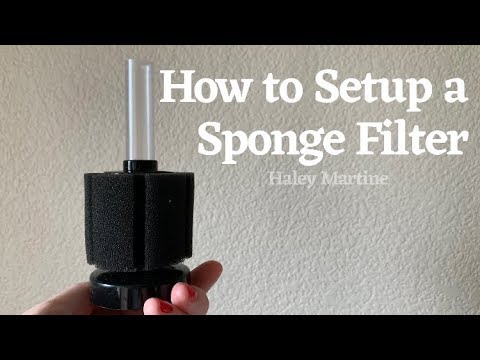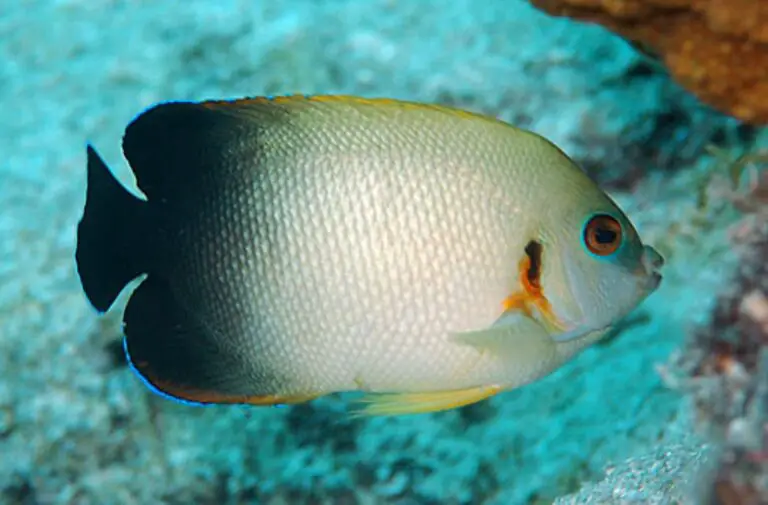How to Set Up a Sponge Filter?
A sponge filter is a popular choice for aquarium hobbyists. To set up a sponge filter, begin by attaching an air pump to the filter using tubing.
Place the intake tube of the filter into your aquarium and then secure it in place with suction cups, if applicable.
Connect the outlet tube from the output side of the filter to any desired equipment or accessories like a powerhead or an additional filtration system.
Next, fill the canister portion of your sponge filter with ceramic rings, bio-balls, or other media depending on what type of filtration you are attempting to achieve.
Finally, plug in and turn on your air pump so that water will flow through your new setup and create bubbles within the ceramic rings/media inside of your canister.
Your sponge filter should now be working properly!
Step 1: Put together the sponge filter. First, gather all the parts like the lift tube, air hose, airstone, and suction cups. Then, connect each part following the instructions.
Step 2: Put the sponge filter in your tank. Lower it carefully and use suction cups to stick it to a flat surface. Don’t put it on top of gravel or substrate because it can get clogged and damaged.
Step 3: Connect an air pump to the sponge filter to add air. Use the tube to connect the air pump to the lift tube on the bottom of the filter.
When you turn it on, it will make bubbles that move up through the water. This adds oxygen to the water and helps good bacteria grow in the sponge filter.
Step 4: Keep an eye on your new sponge filter. Check it often to make sure it’s cleaning the water well and keeping the tank clear.

Credit: fishkeeping.info
What Parts Do You Need for a Sponge Filter?
To set up a sponge filter in your fish tank, you need a few things. You need an air pump to move water through the filter.
You also need a check valve to keep air pressure if there’s a power outage. You need airline tubing to connect the pump to the filter.
The filter should come with its own media for filtration. You might need a suction cup or clip to place the filter in the tank. With these items, you can easily set up a sponge filter.
Where Should I Place My Sponge Filter?
When you put a sponge filter in your fish tank, think about the size of the tank and the type of fish you have. Sponge filters are good for small tanks.
If you have fish that stay near the bottom like Corydoras or Plecos, put the filter near the bottom.
If you have active fish like tetras or barbs, put the filter at one end of the tank.
Make sure there’s enough space around the filter so it doesn’t get clogged. Leave about 3 inches of space on all sides.
How Do You Set Up a Sponge Filter in an Aquarium?
Setting up a sponge filter in an aquarium is relatively straightforward, but it’s important to take the time to do it right.
First off, you’ll need to select a suitable filter and make sure that there is enough space for the unit within your tank.
If possible, try and position the filter away from powerheads or any other sources of turbulence as this can impact on its effectiveness.
You will then need to attach suction cups to secure the sponge filter in place, ensuring that all of them are firmly fixed so that there is no risk of movement.
Next, connect any required tubing between your air pump and the intake pipe located on top of your sponge filter (make sure you use airline tubing rather than anything more rigid).
Finally, switch on your air pump and monitor water flow into and out of your filtration system over time; if necessary adjust until optimal levels are reached.
With regular maintenance such as cleaning/replacing sponges when needed, your aquarium should remain healthy thanks to this type effective biological filtration!
How Long Does It Take for a Sponge Filter to Establish?
A sponge filter is a great choice for aquariums that need biological filtration, as they are very effective at removing toxic ammonia and nitrite.
Establishing the filter correctly is important to ensure it’s working optimally and that the aquarium environment remains healthy.
The process of establishing a sponge filter can take anywhere from 2-4 weeks depending on the size of your tank and other factors such as water temperature, pH, etc.
During this time, beneficial bacteria will begin to colonize in the sponges providing cleaning power for your aquarium.
In order to create an optimal environment for these bacteria to thrive, you should make sure you have plenty of oxygen flowing through the system by adding an air pump or additional filters if necessary.
Feeding your fish regularly with high quality food will help promote bacterial growth and keep them in good health during this establishment period.
With proper care and attention given to setting up a sponge filter correctly, it can be established within 2-4 weeks so that your fish can live their best lives!
How to Use Sponge Filter Without Air Pump?
Using a sponge filter without an air pump is possible, but it requires using the power of gravity to create water flow.
To do this, you will need to attach some tubing from the top of your tank down into a bucket that has been filled with water and set up at a lower level than your aquarium.
This will allow the water in the bucket to slowly siphon back up into the tank, pulling any debris or waste out through the sponge filter as it moves past.
This technique can be useful for smaller tanks or if you have limited access to electricity in order to operate an air pump.
How to Set Up a Sponge Filter With Air Stone?
Sponge filters are good for cleaning your fish tank. To set it up, connect the air stone to the air pump tube and put it in the bottom of the tank.
Make sure it’s not blocked by decorations or gravel. Connect the sponge filter to the air pump with another tube.
Put the sponge filter in the tank where you want the most water flow. Then, turn on the powerhead or airstone to start filtering.
How to Use a Sponge Filter?
Sponge filters are good for cleaning your fish tank. They pull water through a sponge and catch dirt and waste.
You need to put it in the right place on your tank’s tube or pump. This makes sure the water flow is strong enough to pull dirt into the filter without bothering the fish.
You should clean your sponge filter with hot water often to keep bad bacteria away.
How Do Sponge Filters Work?
Sponge filters are a popular type of aquarium filter that use sponges to mechanically and biologically filter water.
The sponge catches dirt in the water. Good bacteria live on the sponge and change harmful chemicals into less harmful ones.
This effective filtration system is easy to install, maintain, and can be used in both fresh or saltwater tanks.
Sponge Filter With Air Pump
A sponge filter with an air pump is a great way to keep aquarium water clean and healthy.
A sponge filter catches dirt in its sponge. The air pump adds oxygen for good bacteria to grow. This bacteria helps clean harmful ammonia.
It also creates additional currents in the tank which helps circulate water more efficiently throughout the aquarium environment.
Sponge Filter Aquarium
A sponge filter aquarium is a great choice for any aquarist looking to provide mechanical and biological filtration to their tank.
These filters use sponges to trap solid waste, while the air pump provides oxygenation and water movement in the tank.
The sponge’s holes let good bacteria live on them. This bacteria changes harmful chemicals into less harmful ones.
They are easy to maintain, requiring only occasional rinsing or replacing of the filter media.
How to Clean Sponge Filter?
Sponge filters are a great way to keep your aquarium clean and healthy, but they need regular cleaning in order to be effective.
To clean the sponge filter, remove it from the tank, rinse it with fresh water, then squeeze out any debris or dirt particles that may have collected inside.
Once cleaned, you can place the sponge back into your aquarium for continued use.
You can also soak the sponge in an aquarium-safe cleaner such as hydrogen peroxide or vinegar for 10 minutes if needed.
Small Sponge Filter
A small sponge filter is an aquarium tool. It uses a pump powered by air to pull water through a foam-like material.
This process helps clean the water in two ways: physically and biologically.
This filter is great for small tanks. It doesn’t need a lot of space or power, but it still cleans the water effectively.
It keeps the tank healthy and prevents harmful substances like ammonia and nitrate from building up.
Sponge filters are easy to maintain since they can be easily removed from the tank for cleaning or replacement if needed.
Conclusion
Setting up a sponge filter is an easy and inexpensive way to keep your tank clean. It’s also beneficial to the health of any fish in the tank due to improved water quality.
With minimal setup and maintenance required, you can enjoy a healthier aquarium with fewer problems.
A sponge filter is a great, affordable filtration system for both new and experienced fish keepers.






